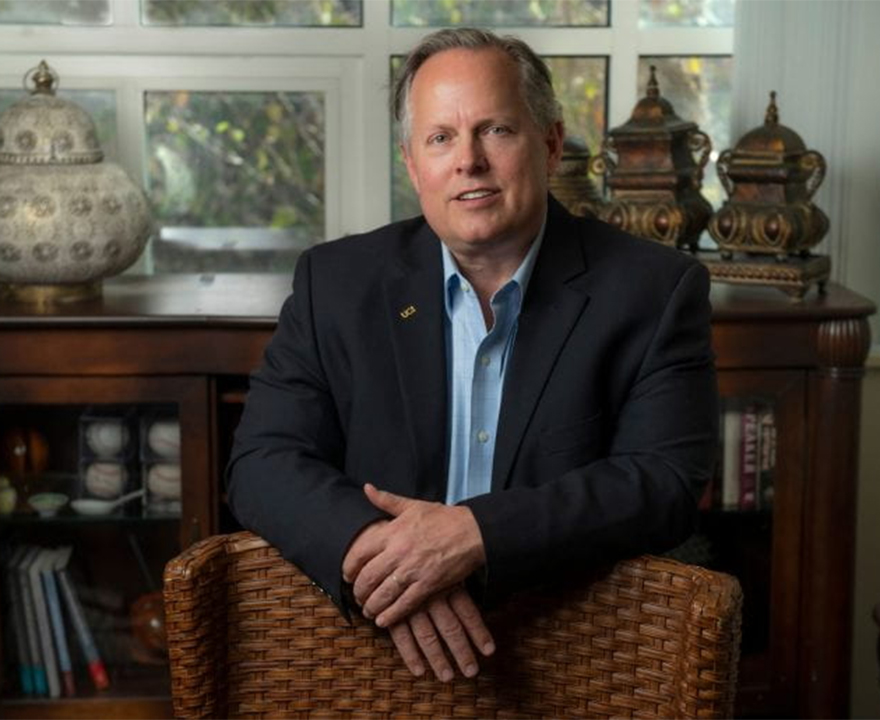National Human Trafficking Awareness Day

National Human Trafficking Awareness Day
- January 9, 2023
- Charles Anthony Smith, UCI political science professor and co-author of Sex Trafficking and Human Rights, offers perspective on a critical global issue
-----
“National Human Trafficking Awareness Day is recognized every January 11 in order to bring attention to human trafficking in the United States. Cultural portrayals of human trafficking, whether through television, film, or literature, might lead someone who is only casually engaged in the issue to believe human trafficking happens only in economically disadvantaged countries or far away and foreign cities. The truth is that human trafficking is ubiquitous around the world. While it takes different contours depending on the specific contours of the economies and cultures at issue, there are some commonalities about human trafficking and the approaches to combat human trafficking that hold true across borders.
So first, it is critical to understand what human trafficking is. Simply put, it is the transport of a person, whether across state or country lines or not, for some illicit commercial purpose. Examples of human trafficking include the harvesting of organs for transplant of prisoners in authoritarian countries; the enslavement of agricultural, domestic, textile, or fishery workers; and – the topic people often think of first, trafficking for purposes of sex work. Sex trafficking is the most common form of human trafficking and overwhelmingly the victims of human trafficking are women and girls. In our new book, Sex Trafficking and Human Rights: The Status of Women and State Responses (Georgetown University Press), we draw a critical link between women’s rights and nation state responses to human trafficking. Poverty, lack of educational and economic opportunity, and a general societal de-valuation of women and girls are the common threads.
There is a direct relationship between social, political, cultural, and economic equality for women and how effectively states respond to human trafficking. Where women and girls are treated as second class citizens, the states tend to criminalize the actions of those enmeshed in human trafficking, including those who are actually trafficked. In those places where women come closer to social, political, cultural, and economic equality, the women and girls victimized by sex trafficking are thought of as a vulnerable group in need of assistance rather than just criminals. Our generalizable finding is that greater equality leads to more effective state responses. Because the U.S. has a multi-scalar legal system, that is, national, state, and local laws intertwine to create the continuum of response to sex trafficking, we see variation in responses at the state level that maps along the equality arc.
There are policy responses that can help. First, government should take the crimes surrounding sex trafficking seriously. Because the process targets the disenfranchised to begin with, the criminal enterprise never garners the level of policy-maker intensity that crimes that impact their constituents might. Second, passing other policy initiatives to diminish the systematic inequality faced by women and girls would go a long way toward improving the state response to sex trafficking.”
Charles Anthony Smith is a professor of political science and law at UC Irvine. His co-authors on Sex Trafficking and Human Rights: The Status of Women and State Responses include Heather Smith-Cannoy, associate professor of political science, Arizona State University, and Patricia C. Rodda, assistant professor of international relations, Carroll University. Learn more in this author Q&A.
-----
Would you like to get more involved with the social sciences? Email us at communications@socsci.uci.edu to connect.
Share on:
Related News Items
- Careet RightGovernor Newsom's team follows mimicking posts with opening an online store
- Careet RightThe launch of Governor Newsom's online merchandise store
- Careet RightGovernor Newsom's new merchandise website is live
- Careet RightFederal justice department sues CA over allowing trans athletes to compete with cis athletes
- Careet RightLatest in relationship between President Trump and Elon Musk


